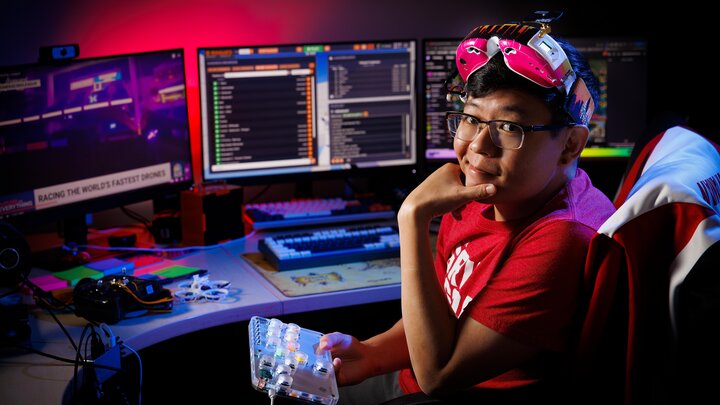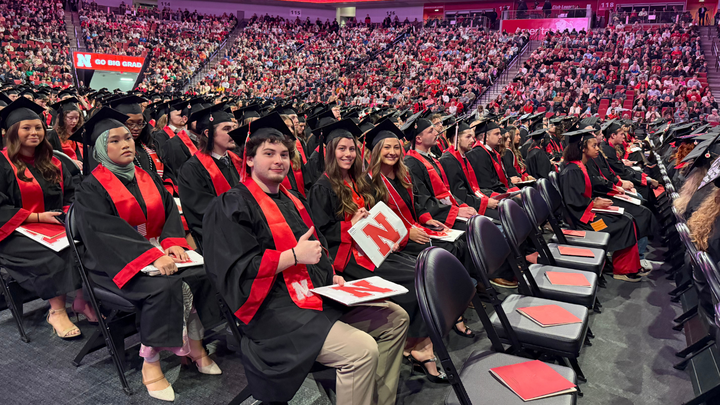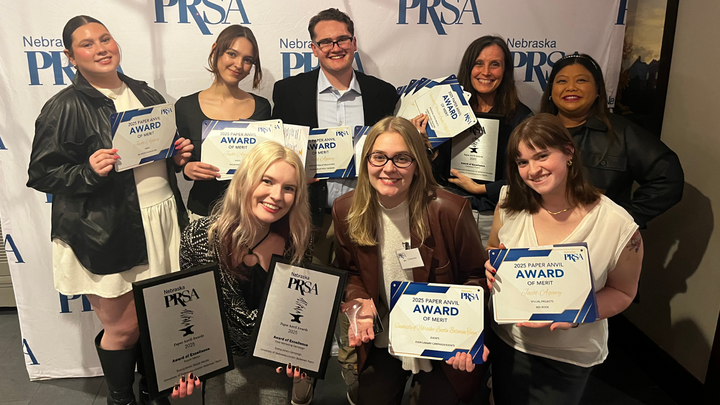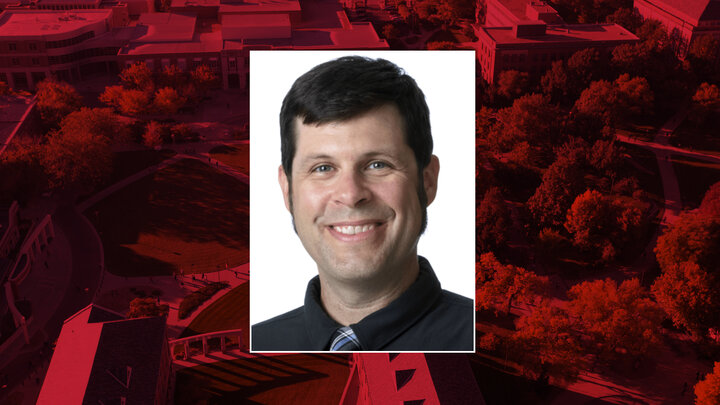The College of Journalism and Mass Communications has undergone a significant transformation in its approach to research and creative activity. Historically, the College was primarily composed of industry professionals who contributed valuable insights to media practices but placed limited focus on traditional academic research. However, a strategic shift has led to a robust expansion of scholarly output, creative work and research funding, positioning the College as an emerging leader in journalism and mass communications.
This transformation was driven by the University of Nebraska System's ambition to rejoin the Association of American Universities and the College’s strategic plan, approved by faculty in May 2021. One aim specifically outlines emphasizing and prioritizing research and creative activity across the College, setting a clear roadmap for the College's academic growth and national impact.
"Transforming our research and creative activity has been a deliberate and strategic effort,” said Shari Veil, Jane T. Olson Dean of the College of Journalism and Mass Communications. “We recognized the importance of balancing our professional expertise with academic research to ensure our faculty contribute to both media practice and scholarship."
The College’s commitment to research excellence is clearly reflected in key metrics. Faculty publications have surged, jumping from 10 in 2020 to 35 in 2024—a 250% increase. These publications regularly appear in top-tier academic journals, including Health Communication, Social Media + Society and Journalism & Mass Communication Quarterly. This rise in scholarly output underscores the College’s growing influence in both academic and professional spheres, addressing timely issues such as digital communication, media ethics and societal impact.
"We’ve been intentional about supporting faculty research, whether through seed grants, mentorship or opportunities for collaboration,” said Cory Armstrong, associate dean for research and faculty affairs. “The results are visible in the significant rise in faculty publications, especially in some of the leading journals in our field."
Faculty are also gaining media attention locally and nationally. Armstrong’s research on enhancing the effectiveness of severe weather alerts was recently featured in the Omaha World-Herald and on KETV in Omaha. Assistant Professor Ciera Kirkpatrick’s work on the impact of social media on new mothers attracted coverage from Nebraska Public Media, U.S. News and World Report and 10/11 News, while Assistant Professor Kelli Boling has become a recognized expert on true crime podcasts, with features by Fox News, Rolling Stone and The Huffington Post.
Recognition from the academic community has also grown. Assistant Professor Ryan Tan’s win at the 2023 UNL Research Slam marked the College’s third consecutive victory, following Kirkpatrick’s win in 2021 and Fred and Gladys Seaton Professor Valerie Jones’ win in 2022. In 2024, Boling received the Outstanding Early-Career Woman Scholar Award from the Lilian Lodge Kopenhaver Center, and Assistant Professor Brian Petrotta earned a prestigious ESPN Fellowship.
Grant activity has also experienced significant growth. In the 2023-2024 academic year alone, the College submitted 11 external grant applications—up from six the previous year. These applications span a diverse range of topics, from risk crisis communication to information sharing in cancer clinical trials. Two of these applications have already been awarded, including a notable research grant on risk information during weather events.
Internally, the college has increased its pursuit of grants by 128% in just four years, growing from seven grant applications in 2020-2021 to 16 in 2023-2024. More impressively, the average size of internal grant awards has grown from $8,583 to $651,166 over the same period.
A key driver in this growth is the College’s participation in the University of Nebraska-Lincoln’s Grand Challenges initiative. Faculty have contributed to projects tackling critical societal issues, from climate resilience to autonomous driving technologies for underserved communities. Currently, faculty are involved in 10 Grand Challenge projects, reflecting the College’s alignment with the university’s strategic priorities.
"Collaborating on the Grand Challenges has been rewarding,” Associate Professor Changmin Yan said. “We set audacious goals to tackle pressing issues Nebraskans face daily by working across disciplines to find real solutions, connecting with the community in meaningful ways, and making a local impact that resonates nationally."
The recent establishment of the Social (and Traditional) Media Analytics and Research Tools Lab (SMART Lab) through a Nebraska Research Initiative grant further cements the College’s commitment to cutting-edge research. This state-of-the-art facility will enable faculty and students to explore how traditional and social media shape public discourse, positioning the College at the forefront of media analytics.
"The SMART Lab will be a game-changer for the College," said Associate Professor Bryan Wang, who is also co-director of the SMART Lab. "It will allow us to dive deeper into media analytics, providing insights that can inform how media impacts society in real-time."
The College’s expansion in research is complemented by its ongoing commitment to creative activity. In May, Hitchcock Professor of Journalism Barney McCoy premiered “Running Towards the Fire: A War Correspondent’s Story,” a documentary that explores the life of a Nebraska native who reported from the front lines of World War II. The film aired on Nebraska Public Media, is being distributed nationally on PBS stations, and exemplifies the College’s strength in storytelling and creative media production.
"With Running Towards the Fire, I wanted to highlight the human stories that often get overlooked during conflict," McCoy said. "It’s an honor to share this piece, preserve history and showcase the critical role journalists play in times of crisis."
The surge in research and creative activity has also led to a 192% increase in faculty conference presentations, from 14 in 2022 to 41 in 2024, allowing faculty to share their expertise with national and international audiences. For example, Petrotta, Assistant Professor Jason Stamm and William H. Kearns Chair Frauke Hachtmann, presented their paper, “BIRGing of Record-Breaking Women’s Sporting Events,” at the International Association for Communication and Sport in Burbank, California. Meanwhile. Jerry and Karla Huse Professor Michael Park showcased his work, “A Marketplace (Failure) of Ideas: Disinformation Campaigns, Market-Based Coercion, and an Affirmative Democratic Theory of the First Amendment,” at the International Communication Association Annual Conference in Gold Coast, Australia.
Looking ahead, the College continues to build on its momentum. In the fall of 2024, Jones and Yan expanded on research conducted during a 2023 Fulbright fellowship in Australia, exploring how interactions with voice assistants like Amazon Alexa can alleviate loneliness in aging populations. Professor of Practice Matt Waite authored an interactive data journalism textbook. In spring 2025, Associate Professor Dane Kiambi will publish his comparative study on public relations practices in Kenya.
"Our faculty’s commitment to producing meaningful research and creative projects is inspiring,” Veil said. “As we continue to build on this momentum, we’re not only strengthening our impact locally, nationally and globally, but also contributing to the University of Nebraska System’s goal of rejoining the AAU.”
The College of Journalism and Mass Communications' transformation into a research powerhouse marks a pivotal moment in its history. With rising peer-reviewed publications, increased grant activity and a sustained focus on creative work, the College is well on its way to becoming a national leader in media research and scholarship.
"We’ve come a long way in just a few years, and the progress we’ve made is remarkable,” Veil said. “We’re confident that with continued investment and support, our college will stand out as a leader in both academic research and creative activity."
To learn more about the college’s recent achievements in research and creative activity, visit https://journalism.unl.edu/latest-publications/.




